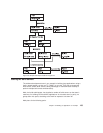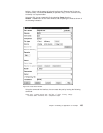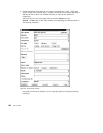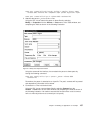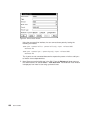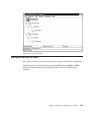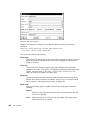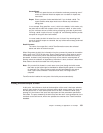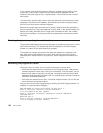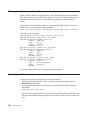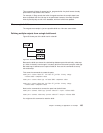
Unconditional
Builds only parts that are out-of-date but continues processing even if
errors are returned. Note that outputs are not rebuilt for inputs that
have failed.
Report Gives a preview of what would be built if you invoked a build. The
report identifies what steps would occur without any translations
taking place.
In our example, Greg specifies -normal, which is the default. In this mode, only
the parts that are stale with respect to their inputs are rebuilt. In other words,
only the minimum amount of work to bring everything up-to-date is performed.
“Running a build in spite of errors” on page 193 and following sections provide
examples of using the other build modes.
In normal mode, the build is halted if an error is found. Any remaining build
events in the build scope are canceled, but any build events already performed
are not undone.
Detail file name
The name of an output file in which TeamConnection stores the collected
stdout and stderr of the build scripts.
When Greg starts the build, the information from the command is passed to the testfam
family server over TCP/IP. At this point, Greg’s TeamConnection client waits to receive
confirmation from the family server that the build request was received and is being
processed. Included in this processing; the family server does the second phase of
parsing, where the validation of dependency information is done, and then it determines
what needs to be rebuilt and adds this to the job queue.
Note: Only one build is allowed in a work area at one time (though the build events
that make up the build might be distributed to different build agents on a number
of machines). So if Greg is sharing work area 223 with Barbara, she cannot
issue a part -build command in that same work area until Greg’s build is
complete.
TeamConnection handles the next parts of the build process automatically.
Putting the build scripts to work
At this point, the build server looks at the description of the event it has been asked to
perform, then checks its cache for each part and the build script it needs. If it does not
find the parts there, or if the cached parts are out of date, it invokes the build script,
passing to it the names of the input and output parts and the parameters specified on
the builder. The parts created by the build script and the return code generated by it are
sent back to the build server, which then updates the contents of the TeamConnection
database.
Chapter 15. Building an application: an example 191



